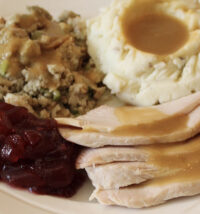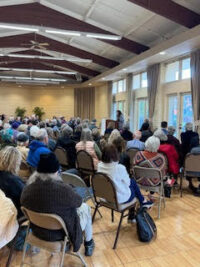Bonnie Durrance/Sonoma Valley Sun
Council moves forward with at home farming.
With costs of living rising along with the cost of fossil fuel, Sonoma City Council is gearing up to take action – allowing homeowners with a bit of land to grow their own.
The movement, led by long-time Sonoma vegetable grower and poultry man Bob Cannard, would have the council relax the local ordinances to permit city dwellers to keep chickens and rabbits for food production. It would also encourage developers to incorporate in their properties vegetable garden landscaping instead of lawns.
Council members are supportive of the idea, and the issue now is not whether to go ahead with the project, but how.
City Planner David Goodison introduced the topic at the July 2 meeting reminding the council of the three overall benefits of the grow-your-own plan: community sustainability, greater awareness of the food cycle and increased reliance on locally grown food.
“Having researched the issue, staff is now coming back with directions for the council to consider,” he said. Goodison noted that while there were many reasons to change the current ordinance, there were also practical issues to keep in mind having to do with raising animals in a confined situation where there are neighbors.
“There’s feeding, cleanup, sanitation requirements,” he said. “Otherwise, problems can occur.”
Goodison said that the law currently requires a 10,000-square-foot lot for maintaining small livestock, and suggested that be reduced to 6,000 square feet. “That captures the great majority of lots within the low-density zone and other single-family zoning districts.” Mayor Joanne Sanders said she would like the lot size requirement smaller “so people in higher density areas or in low-cost housing could participate in the health and overall benefits such a lifestyle would involve.”
Goodison said that might become a zoning question. “Does the council want to allow for the keeping of poultry and rabbits in multi-family and commercial districts? If that’s the case, then the lot-size issue should be revisited. The more neighbors you have, the closer together, the more opportunities for conflict you have.”
The distance from the enclosure to a neighbor is currently 1,500 feet. Goodison proposed that be adjusted to 35 feet. Sanders questioned whether even that was realistic for most properties. She said the real issue was not so much distance as the maintenance. “I think we want to avoid haphazard maintenance conditions at any distance,” she said.
Unresolved also was the number of individuals in the flock. “Our suggestion for … an over-the-counter permit would be eight,” said Goodison. “We specify some basic habitation requirements, rear yard, some basic care requirements, and continue to ask for an initial permit inspection. We suggest the permits be revocable at any time, if we determine the proper care is not being provided.”
Councilmember Barbose asked whether there are any other cities that have these ordinances. “It’s all about finding the balance that’s suitable for this town.”
As for balance, Cannard, who said his earliest memory was of peeping chicks in a box on the kitchen floor beside the cast iron stove, laid out in no uncertain terms what he believed to be the right balance and proper specifications.
“The minimum lot size of 6,000 feet is out of line,” he said. “Regardless of the size lot, it should be utilized.” The established distance, too, he deemed incorrect. “That 35 feet,” he said. “That is beyond comprehension to me. We do not require a distance to put in a dog yard. Yet dogs are going to be 10 times more noisy.”
As for the number of rabbits or fowl, he considered the council’s limits way too low. “Absolutely not less than 12 hens,” he said. That would keep a family in eggs. “And roosters, we have to accept.” As for rabbits, he recommended two pairs.
“The $123 fee is absolutely absurd.” he added, and appeared ready to commence a dissertation on slaughter as Mayor Sanders called his time.
After Cannard’s presentation the council remained open to further study on the subject. Vice-Mayor Ken Brown said, “I continue to have considerable amount of issues with this.” He said he awaits further expert testimony on the subject. “The eggs and the chickens I can get my mind around,” he said. “I truly do not understand the rabbits that are raised for food. And I don’t think people are able to do what needs to be done at the end point.”
Mayor Sanders said the whole project puts children in touch with animals, teaches responsibility and gives them a feeling of putting food on the table.
“As far as killing rabbits for food, I don’t think it’s the government’s role to prohibit that or not. It’s not their business. In our general plan, we talk about land use, and enhancing the natural setting of the community, and I think this goes along with the values the council set forth in its last general plan.”
The City Chicken, an informative website featuring chicken lore from egg to platter, lists numerous cities’ chicken laws ranging from no chickens at all (Sacramento) to chickens unlimited (Santa Fe). Santa Rosa City Manager Marie Meredith said that in her city, chickens are allowed in rural residential zoning with a minimum lot size of 20,000 square feet with no fees and no specified setbacks. Compliance is managed by complaints. “We work with property owners to gain compliance and correct nuisance factors,” she said.







